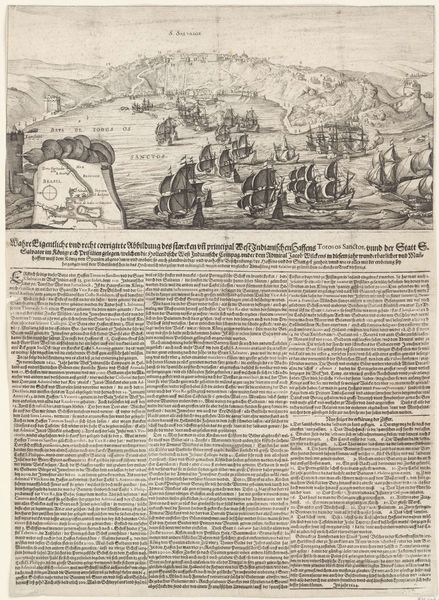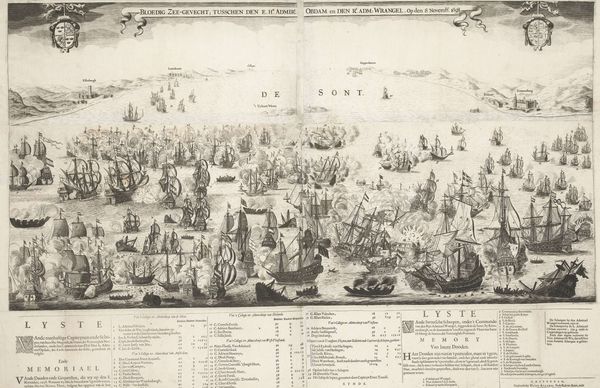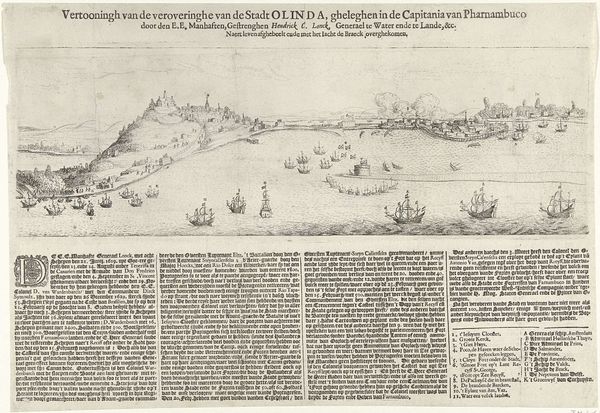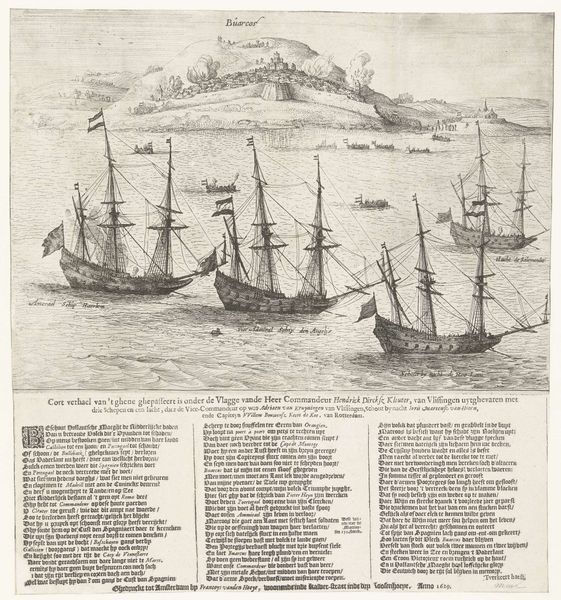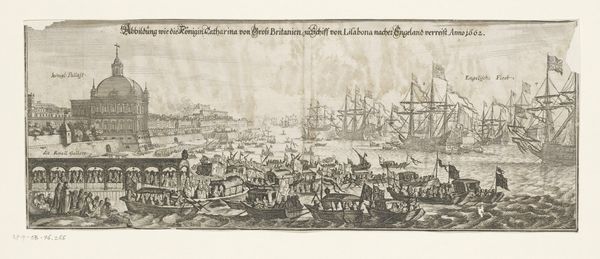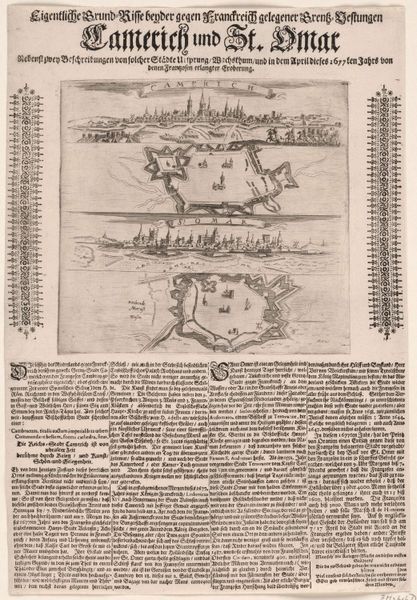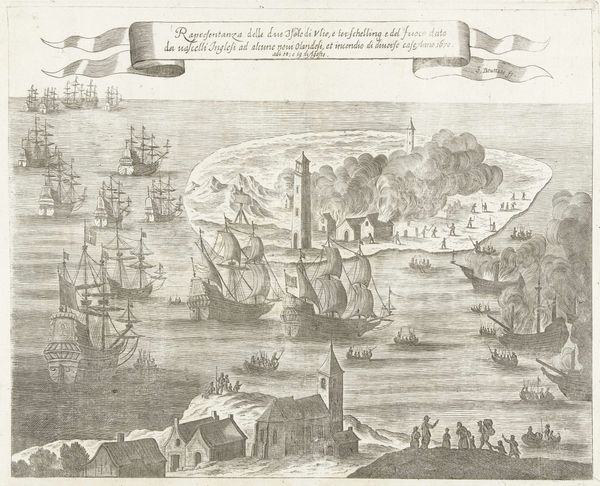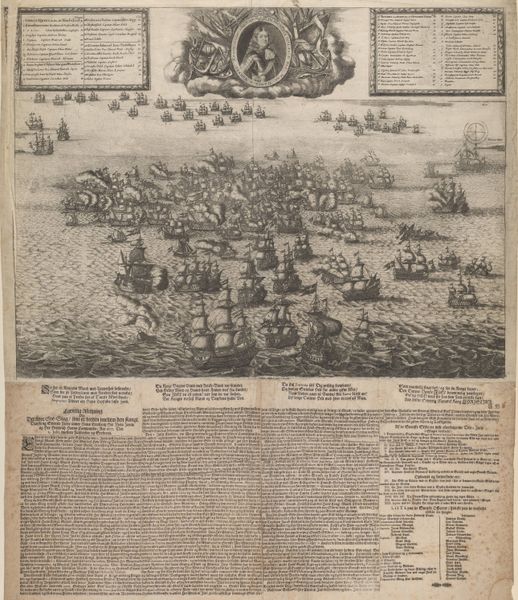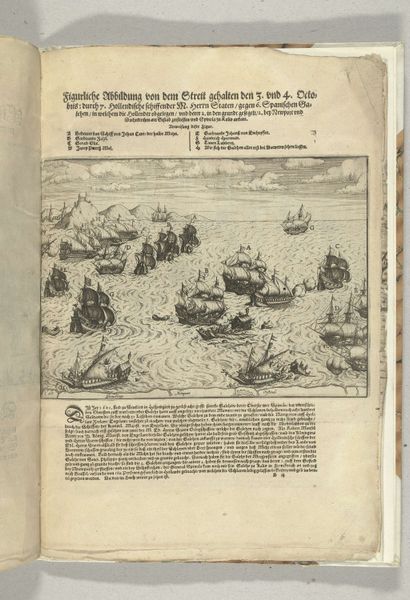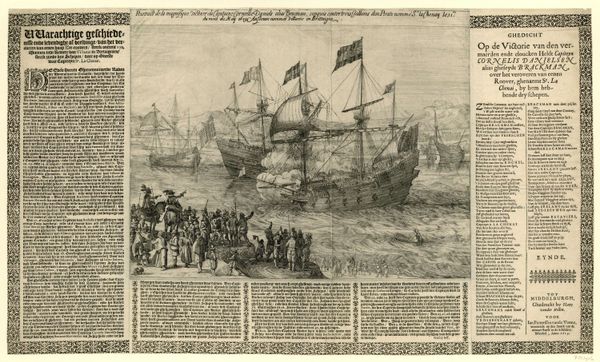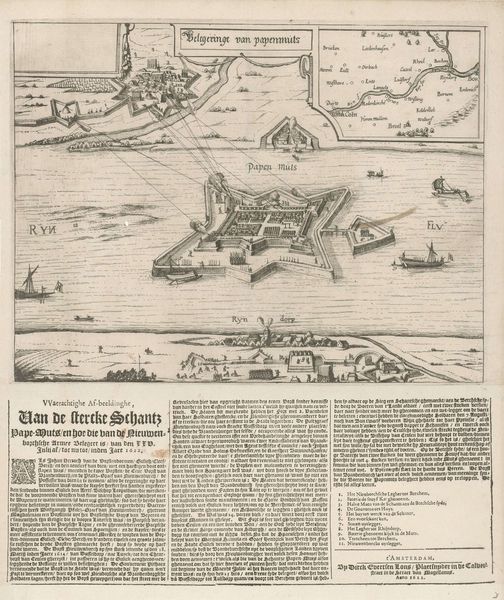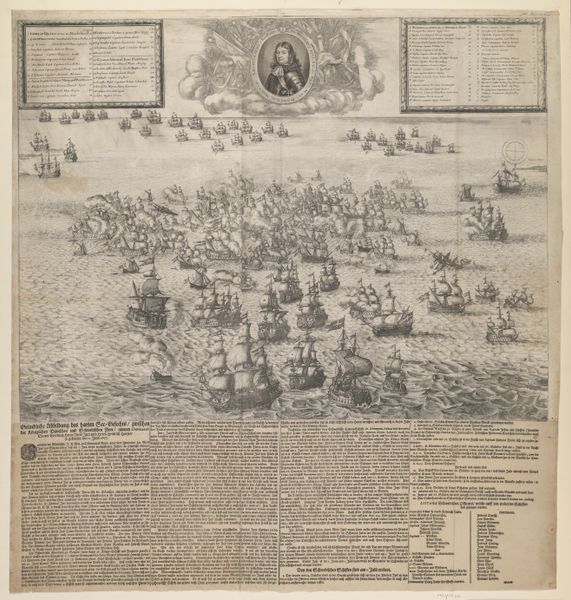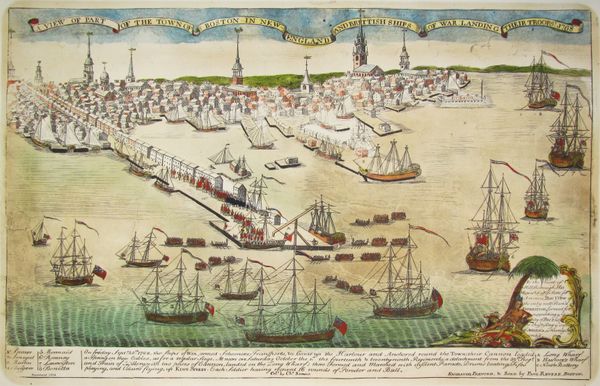
Verschillende middelen om schepen over het Pampus heen te halen, ca. 1700 1690 - 1710
0:00
0:00
drawing, print, engraving
#
drawing
# print
#
landscape
#
line
#
history-painting
#
engraving
Dimensions: height 566 mm, width 425 mm
Copyright: Rijks Museum: Open Domain
Curator: This detailed engraving, attributed to Cornelis Meijer and created around 1700, is titled "Verschillende middelen om schepen over het Pampus heen te halen, ca. 1700" which translates to "Various means to get ships over the Pampus". The Pampus was a shallow area in the IJ near Amsterdam, a notorious obstacle for larger vessels. Editor: It looks incredibly systematic! A very precise layout—almost like a technical drawing of… well, how exactly did they deal with this "Pampus" problem? Curator: Exactly. It’s an illustrated inventory of engineering solutions, each carefully numbered and lettered. We're seeing winches, floating docks, even a type of camel – a construction used to lift ships. What really grabs me is the sheer ingenuity applied to overcoming a practical, material obstacle. Editor: Those ships are so detailed. But beyond the naval technology, I see symbols of Dutch maritime power— the rise of Amsterdam as a vital trading port. The ships are not just cargo vessels; they are visual statements of control and ingenuity. Curator: That power comes from harnessing human effort. Notice how many figures are interacting with these devices. This print really puts labor, and the manipulation of materials, front and center. It depicts both the problem of moving resources across difficult waterways and the development of processes and physical objects, or “solutions” for moving ships safely to sea. Editor: I’m thinking of Neptune or Poseidon. A hidden narrative, in the subtext of human beings finding a way to defeat his influence in order to open access to the sea; those watery gates they controlled, as alluded to in the inscription below the print's title. The ingenuity of mankind to overcome this challenge, even if it does relate to how this allowed for the advancement of colonial control and capital gain… It has this air about it. Curator: It's certainly tied to larger forces; economic power and maritime supremacy were driving the development of these techniques. We shouldn’t ignore that. However, this plate draws attention to materials— rope, wood, iron—and, above all, to applied technique as fundamental. This is all about making and doing. Editor: Looking closely has really highlighted for me the human ambition inherent in these images. How interesting to unpack an artistic plate with such layered symbolism through technological material advances. Curator: Indeed, and for me, it reinforces the notion that ingenuity, at its heart, depends upon, and always finds its place as being at the service of a material existence and making process.
Comments
No comments
Be the first to comment and join the conversation on the ultimate creative platform.
